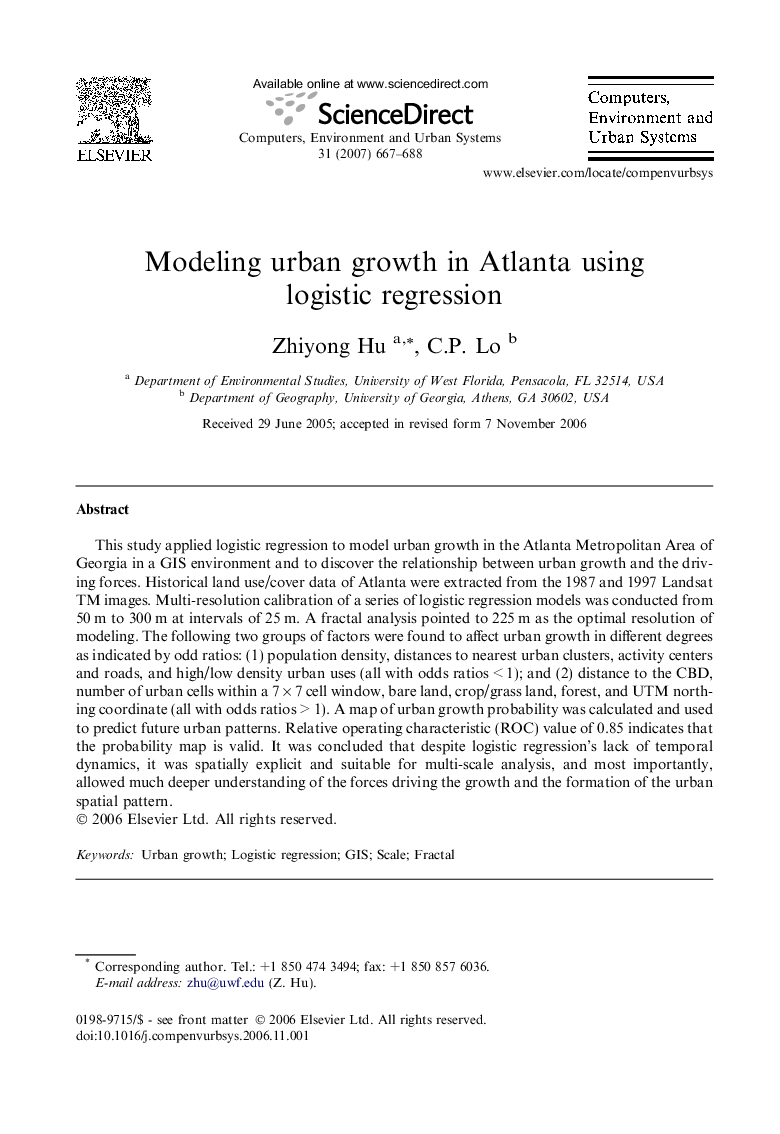| Article ID | Journal | Published Year | Pages | File Type |
|---|---|---|---|---|
| 506684 | Computers, Environment and Urban Systems | 2007 | 22 Pages |
This study applied logistic regression to model urban growth in the Atlanta Metropolitan Area of Georgia in a GIS environment and to discover the relationship between urban growth and the driving forces. Historical land use/cover data of Atlanta were extracted from the 1987 and 1997 Landsat TM images. Multi-resolution calibration of a series of logistic regression models was conducted from 50 m to 300 m at intervals of 25 m. A fractal analysis pointed to 225 m as the optimal resolution of modeling. The following two groups of factors were found to affect urban growth in different degrees as indicated by odd ratios: (1) population density, distances to nearest urban clusters, activity centers and roads, and high/low density urban uses (all with odds ratios < 1); and (2) distance to the CBD, number of urban cells within a 7 × 7 cell window, bare land, crop/grass land, forest, and UTM northing coordinate (all with odds ratios > 1). A map of urban growth probability was calculated and used to predict future urban patterns. Relative operating characteristic (ROC) value of 0.85 indicates that the probability map is valid. It was concluded that despite logistic regression’s lack of temporal dynamics, it was spatially explicit and suitable for multi-scale analysis, and most importantly, allowed much deeper understanding of the forces driving the growth and the formation of the urban spatial pattern.
